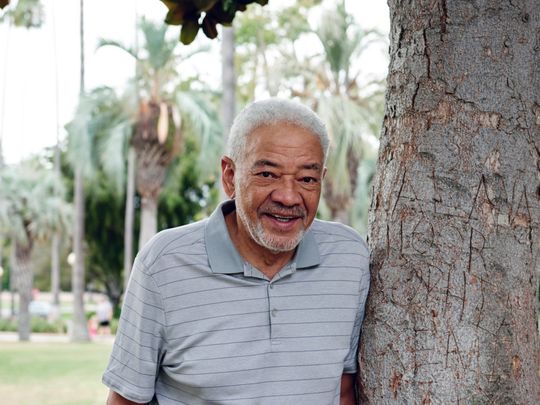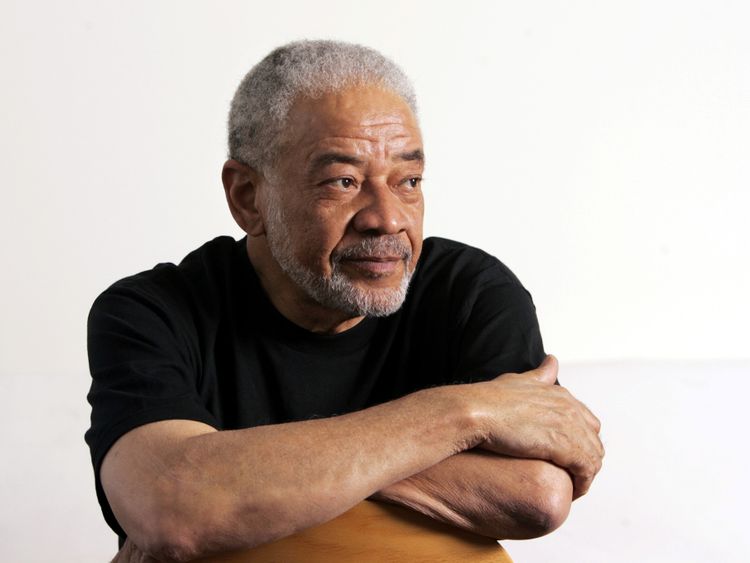
Bill Withers always sounded like he was strumming the guitar from a seat at his kitchen table — or maybe, at his most luxurious, an easy chair in the living room.
The ultimate homespun hitmaker, he had an innate sense of what might make a song memorable, and little interest in excess attitude or accouterments. Ultimately Withers reminded us that it’s the everyday that is the most meaningful: work, family, love, loss. None of that needs dressing up to feel real; it just needs a good melody. And maybe an unswerving beat.
Withers, who died last week, is remembered for his hits (‘Lean on Me’, ‘Use Me’, ‘Just the Two of Us’) more than for his albums, but maybe that’s an error. By virtue of how he made music, there’s often little difference between the great songs and the very good ones: His singles weren’t surgically constructed to be smashes, and his nonhits were written in roughly the same way. Idea, groove, hook — and that’s it.
As a result, his LPs from the early to mid-1970s, which contain most of his best-known songs, are stuffed with lesser-known gems too. Here are 10 of those easily overlooked classics.
‘Sweet Wanomi’ (1971)
A steadily strummed acoustic guitar mixes it up with a clavinet, bass and drums; later, a string section drifts in. Some combination of these parts covers most of Withers’ debut album, ‘Just as I Am’. The record’s fabulously stripped-down quality commands you to focus on Withers’ melodies, to get cozy with his winningly imperfect voice, to feel the hands being lain on the instruments in the studio. After the LP’s first three tracks, all classics (‘Harlem’, ‘Grandma’s Hands’ and ‘Ain’t No Sunshine’), we get to ‘Sweet Wanomi’, with a summery groove and lyrics celebrating the tender side of desire. Like so many of his songs, there are only a couple of chords and no bridge, plus a beat that subtly turns folk music into funk.
‘I’m Her Daddy’ (1971)
One of the most tenderhearted songs in the Withers songbook is also one of his most aggrieved. It’s written from the perspective of a man who has just found out that a long-ago lover had his child without telling him. “Can I see her?” he pleads. “Does she know/I’m her daddy?” It starts with a lonely acoustic guitar and a drizzle of fingers on a hand drum. By the time he arrives at the title line, letting his syllables linger and sometimes verge into a growl, Withers sounds bewildered by his own sadness.
‘Do It Good’ (1971)
“I can’t play the guitar or the piano, but I made a career out of writing songs on guitars and piano,” Withers told The New York Times in 2015, soon after he was elected to the Rock & Roll Hall of Fame. “I never learned music. I just did it.” That may be more or less true, but on his debut album, executive Clarence Avant brought in a crack team that included Booker T. Jones and Stephen Stills. On ‘Do It Good’, over a two-chord vamp, Withers acknowledges in a spoken interlude that when he first came into the studio, he felt as green as a sprout. He quotes the counsel that Jones gave him: “Don’t worry about it. Just do what you do, and do it good.”
‘Who Is He (and What Is He to You)’ (1972)
With novelistic intrigue, Withers sings of walking down the street with his lover and watching her exchange a seemingly familiar glance with another man. “Dadgummittuh,” Withers spits in a jealous neologism. “Who is he, and what is he to you?” The song would get a second life a quarter-century later, when Meshell Ndegeocello’s largely faithful cover became a No. 1 hit on the Billboard dance chart.
‘I Can’t Write Left-Handed’ (1973)
Before becoming a household name, Withers spent nine years as a Navy mechanic. He left shortly after the Gulf of Tonkin affair and never had to serve in Vietnam. But “I Can’t Write Left-Handed” is written from the perspective of a GI whose right arm was shot off in the Vietnam War; it’s the closest that Withers ever came to penning a protest song. As the narrator asks someone to help him write a letter to his mother, there’s no big climax or rousing chorus — just a slowly unfolding story of heartbreak, as a young man tries to make sense of what’s transpired and searches for a way forward.
‘Stories’ (1975)
This is a rare sort of Withers song: It’s got hymnal chord changes, a set of “come one, come all” lyrics and a flourishing harp played by the great Dorothy Ashby. But ultimately, it’s no less than a declaration of artistic purpose. In the bridge, he makes his mission clear:
Young and old, we all have storiesThat we all must try to sellTales of how you get to heavenAnd how we’ve been through hell.
‘Liza’ (1975)
Think of ‘Liza’ as a more intimate (and, yes, far less anthemic) counterpart to ‘Lean on Me’. After dedicating the song to his niece, accompanied only by an electric piano evoking nursery lullabies, Withers sings: “I know what it means to need a shoulder/So lay your head on mine.” Whereas on ‘Lean on Me’, his voice was hoisted up by a full string section, on ‘Liza’ it stays at a single register, like an elder telling a long story where the plot is not really the point. As he sings, you can almost feel the warmth of his breath.
‘City of the Angels’ (1976)
This is the closest Withers ever got to an epic work, but it’s still Bill we’re talking about: Even a 10-minute track has a certain modesty to it. For the first half, a throbbing beat and a textured blend of acoustic and electric piano carry the track along as he sings a paean to Los Angeles, where he settled after serving in the military and eventually found stardom. For the second half, with the rhythm gone, he drifts back through those same lyrics as if savoring a memory. There’s no big new formal section, or dazzling instrumental solo. Simply not his style.
‘It Ain’t Because of Me Baby’ (1977)
Call it the ‘Hotline Bling’ of the ‘70s — a song whose lyrics basically say: And just as with Drake, the self-righteousness manages to reconstitute as charm. ‘It Ain’t Because of Me Baby’ comes from ‘Menagerie’, which to that point was Withers’ most thoroughly produced album. But even through a slick architecture of strings and horns, his unpretentious romanticism cut straight through.
‘Something That Turns You On’ (1985)
Withers’ last album was a full-on embrace of the by-then-omnipresent “quiet storm” sound. Yet again, he made the style work for him without really changing his mode of delivery at all. Instead of cool bravado or false reassurances — the coin of the realm in a lot of the gussied-up balladry that followed disco — he opens ‘Something That Turns You On’ with a humble prayer for connection: “I hope you find in me; something that turns you on; a tie that binds with me; and holds us together from now on...”














